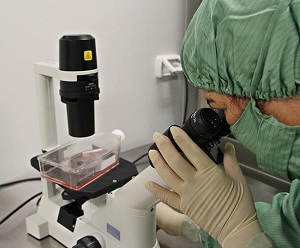 Efforts in the Cuban science through 2018 were aimed at making this sector a key element to generate wealth and advance toward the sustainability of the island’s socioeconomic model and technological sovereignty.
Efforts in the Cuban science through 2018 were aimed at making this sector a key element to generate wealth and advance toward the sustainability of the island’s socioeconomic model and technological sovereignty.
Weighed down by the severe impacts of the Special Period, the tightening of the U.S. economic, commercial. and financial blockade, the persistence of policies unadjusted to the country’s new realities, and other factors, performance in such a vital sphere was impaired by a fall in the number of scientists, associated with the retirement or death of specialists who graduated in the initial stages of the Revolution; emigration; and the move to better-paying domestic sectors.
Likewise, the technology installed in different institutions aged, laboratories were decapitalized, and there were setbacks in doctoral training. The insufficient links between university science and productive and service enterprises also became more evident.
Taking into account the Economic and Social Policy Guidelines of the Party and the Revolution, approved in the 6th Communist Party Congress, held in April 2011, the country assumed the challenge of designing a comprehensive science, technology, innovation, and environment policy, aimed at responding to economic and social development needs in the short, medium and long term. In addition, efforts are directed toward increasing economic efficiency, expanding high value-added exports, substituting imports, and contributing to the population’s welfare.
As Dr. Elba Rosa Pérez Montoya, Minister of Science, Technology and the Environment (Citma) highlighted recently on the Mesa Redonda television program, today, one of the main priorities of the national science, technology and innovation system is preserving and developing the available human capital.
She also stressed the importance of paying the utmost attention to the rejuvenation of personnel linked to this sphere, promoting motivation and the interest of young people in the sciences. An essential part of the work in this regard is to recover scientific reserves, which help define which new professionals meet the required conditions to assume highly important research tasks in different disciplines.
Natural curiosity should be encouraged from an early age, and the use of scientific methods as an indispensable tool of the learning process should be promoted among secondary, pre-university, and technical and professional level students.
Other challenges outlined by the Minister include expediting the introduction and generalization of results; boosting innovation; enhancing the transformative role of science in Cuban society; improving methods to measure its real impact on economic development and GDP growth; and ensuring that this sector rapidly becomes a thriving productive force that generates new exportable goods, and further contributes to import substitution.
On the path of transformations leading to the science and technology sector playing an even greater role in the improvement of citizens’ quality of life, and the nation’s progress in the most diverse spheres, mechanisms are being sought to ensure fair wages for professionals and technicians, based on the final results of their work, and the creation of innovative, useful, and economically profitable contributions.
One of the well-known steps undertaken in this respect is the new organizational and management forms of collaboration in the research sphere, implemented by the BioCubaFarma Enterprise Group and several higher education centers. Examples include joint laboratories with the University of Havana in the nanobiotechnology field, to develop vaccines and innovative drugs, and to increase the added value of existing products; and with the University of Computer Sciences (UCI), in the areas of Medical Informatics, Bioinformatics, and Neuroinformatics.
No less significant is what was outlined on the Mesa Redonda program of December 27, by Minister of Higher Education Dr. José Ramón Saborido, to create a national doctoral training system that, in addition to encouraging growth in the number of professionals at this academic level, makes it possible to lower the average age of Cuban PhD graduates (today this stands at around 40 years old).
According to DSc Luis Alberto Montero Cabrera, professor emeritus of the University of Havana and president of its Scientific Council, a researcher who completes a doctorate before the age of 30 has a much longer professional life to contribute valuable knowledge, and at the same time to promote the scientific education of younger generations.
He likewise emphasized that a solid doctoral promotion program in all possible scientific and technological disciplines offers an immediate and efficient source of results with impacts on the transformation of society.
With eyes set on the years to come, Cuban science is committed to making a reality what was expressed by Comandante en Jefe Fidel Castro, the driving force of this sector, on February 10, 1993, during the inauguration of the Center for Medical Biophysics in Santiago de Cuba: “One day, science and its production must occupy first place in the national economy… We have to develop the production of human intelligence. This must be our place in the world, because there will be no other.”
(Granma)